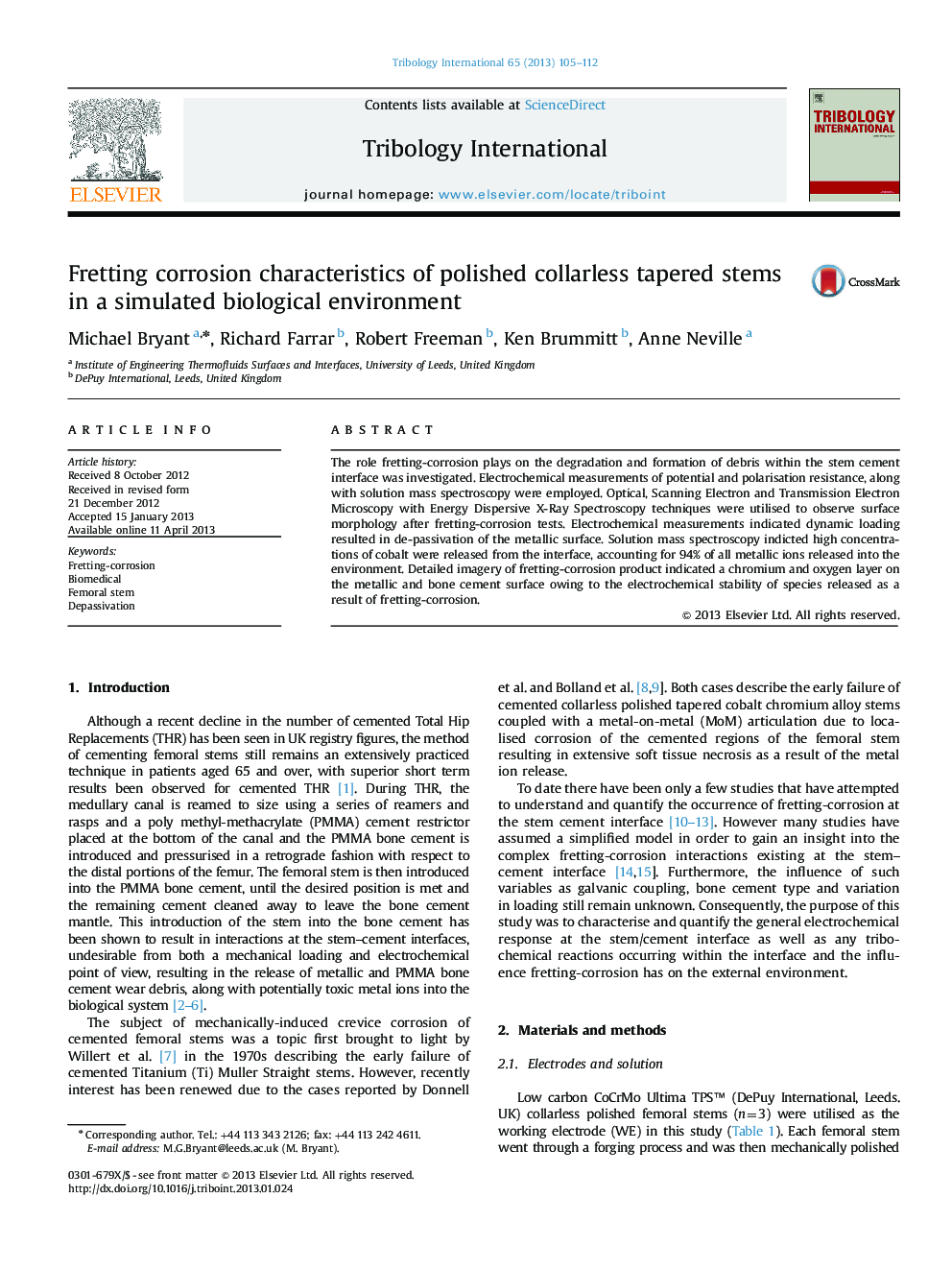| Article ID | Journal | Published Year | Pages | File Type |
|---|---|---|---|---|
| 614984 | Tribology International | 2013 | 8 Pages |
•A novel test arrangement with integrated electrochemistry was developed.•Mechanically-induced depassivation of the surface was seen when load was applied.•TEM/EDX revealed chromium and oxygen rich layer on the femoral stem and bone cement.•A high and preferential release of cobalt from the stem–cement interface was seen.•Corrosion currents and ionic mass losses were similar to a 36 mm MoM articulation.
The role fretting-corrosion plays on the degradation and formation of debris within the stem cement interface was investigated. Electrochemical measurements of potential and polarisation resistance, along with solution mass spectroscopy were employed. Optical, Scanning Electron and Transmission Electron Microscopy with Energy Dispersive X-Ray Spectroscopy techniques were utilised to observe surface morphology after fretting-corrosion tests. Electrochemical measurements indicated dynamic loading resulted in de-passivation of the metallic surface. Solution mass spectroscopy indicted high concentrations of cobalt were released from the interface, accounting for 94% of all metallic ions released into the environment. Detailed imagery of fretting-corrosion product indicated a chromium and oxygen layer on the metallic and bone cement surface owing to the electrochemical stability of species released as a result of fretting-corrosion.
